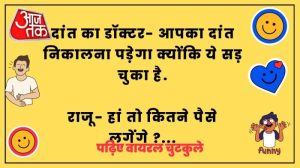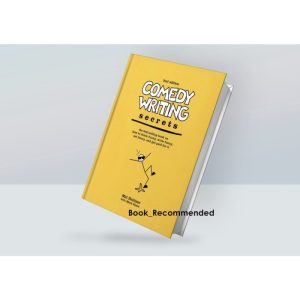
Ever wondered about the quirky geniuses behind those side-splitting sketch comedy shows? From the Marx Brothers’ vaudeville brilliance to the absurdist antics of Monty Python and the modern-day satire of Key & Peele, sketch comedy has always held a mirror to society, reflecting our foibles and celebrating our shared humanity with uproarious laughter. Prepare to dive into the fascinating world of sketch comedy groups, exploring their evolution, creative processes, and enduring impact on entertainment!
This journey will cover everything from the historical roots of sketch comedy, tracing its development through the decades, to the inner workings of creating a successful sketch – from brainstorming sessions to the electrifying energy of a live performance. We’ll examine the unique comedic styles of various influential groups, analyzing their impact on popular culture and their lasting legacy. Get ready for a comedic deep dive!
History of Sketch Comedy Groups
Sketch comedy, a form of comedic performance built around short, humorous scenes, boasts a rich and varied history, evolving alongside societal changes and technological advancements. From vaudeville acts to viral internet sensations, sketch comedy has consistently reflected and shaped popular culture. Its enduring appeal lies in its ability to satirize current events, explore social issues, and simply make people laugh.
A Timeline of Significant Sketch Comedy Groups
The evolution of sketch comedy can be traced through the influence of various groups across different eras. Each group contributed unique styles, formats, and comedic approaches that shaped the genre as we know it today.
| Group Name | Founding Year (Approximate) | Notable Members | Defining Style |
|---|---|---|---|
| The Marx Brothers | 1905 (vaudeville beginnings) | Groucho, Harpo, Chico, Zeppo Marx | Fast-paced, anarchic, absurdist humor; wordplay, physical comedy, and social satire. Their routines often involved chaotic scenarios and subversive wit. |
| Monty Python’s Flying Circus | 1969 | Graham Chapman, John Cleese, Terry Gilliam, Eric Idle, Terry Jones, Michael Palin | Surreal, absurdist humor; often featured bizarre characters, unexpected twists, and visual gags. Their sketches frequently challenged conventions and pushed boundaries. |
| Saturday Night Live (SNL) | 1975 | John Belushi, Dan Aykroyd, Chevy Chase, Gilda Radner, Eddie Murphy (and many more) | Variety of styles, blending topical satire, celebrity impersonations, and recurring characters. Known for its fast-paced, often improvisational nature. |
| The Kids in the Hall | 1984 | Dave Foley, Mark McKinney, Bruce McCulloch, Kevin McDonald, Scott Thompson | Dark, surreal, and often bizarre humor; characterized by grotesque characters, absurdist situations, and a willingness to tackle taboo subjects. |
| Key & Peele | 2012 (Comedy Central show) | Keegan-Michael Key, Jordan Peele | Character-driven sketches often focusing on social commentary and racial stereotypes, employing clever wordplay and observational humor. |
Evolution of Sketch Comedy Styles and Formats
Sketch comedy’s format and style have dramatically changed over time. Early sketch groups, often rooted in vaudeville and music hall traditions, relied heavily on physical comedy and slapstick. Later groups, influenced by the rise of television and film, incorporated more sophisticated writing, character development, and social commentary. The advent of the internet and social media has further broadened the landscape, leading to the emergence of online sketch groups and viral videos that often feature shorter, more concise sketches tailored to the attention spans of digital audiences.
Comparison of Comedic Approaches: Early vs. Modern
Early sketch comedy often emphasized broad physical humor and simple gags, relying on visual jokes and easily understood scenarios. Modern sketch comedy, while still utilizing physical comedy, tends to be more character-driven and narrative-focused. Contemporary groups often incorporate social and political satire, exploring complex themes with greater depth and nuance than their predecessors. While early groups might rely on simple misunderstandings for humor, modern sketches often utilize irony, dark humor, and meta-commentary.
The level of sophistication in writing and performance has significantly increased over time.
Notable Sketch Comedy Groups and Their Impact

The world of sketch comedy is rich with innovative groups who have pushed boundaries, shaped comedic styles, and left an indelible mark on popular culture. Their influence extends far beyond television screens, impacting film, advertising, and even everyday language. Let’s explore some of the most significant contributors to this vibrant genre.
Monty Python’s Flying Circus and Their Absurdist Legacy
Monty Python, a British comedy troupe active in the 1970s, revolutionized sketch comedy with their surreal, absurdist humor. Their sketches were characterized by unexpected twists, non sequiturs, and a blatant disregard for conventional narrative structure. Recurring characters like the Ministry of Silly Walks’ officials and the lumbering, perpetually-annoyed Black Knight added to the show’s unique appeal. The group’s influence can be seen in countless subsequent comedic works, particularly in the embrace of the bizarre and the rejection of logical consistency as a comedic device.
Their impact on British culture is immeasurable, with catchphrases and visual gags remaining instantly recognizable decades later.
Saturday Night Live and Its Enduring Influence
Since its debut in 1975, Saturday Night Live (SNL) has served as a launchpad for countless comedic stars and a consistent barometer of American cultural trends. The show’s format, featuring a rotating cast of performers tackling topical issues and presenting a mix of recurring characters and one-off sketches, has become the template for many subsequent sketch shows. The show’s impact is undeniable; from its influence on political satire to its creation of iconic characters like Wayne and Garth (from Wayne’s World), SNL has continually redefined what sketch comedy can be.
The show’s longevity is a testament to its ability to adapt and remain relevant, reflecting the changing times while maintaining its core comedic sensibilities.
The Kids in the Hall and Their Unique Brand of Dark Humor
The Canadian sketch comedy troupe, The Kids in the Hall, distinguished themselves through their dark, often unsettling humor and their willingness to explore taboo subjects. Their sketches frequently featured bizarre characters and surreal scenarios, often employing grotesque imagery and unsettling twists to generate laughter. Recurring characters like the Headcrusher and the Chicken Lady became cult favorites, showcasing the group’s distinctive comedic voice.
Their impact lies in their fearless exploration of unconventional comedic territory, influencing subsequent generations of comedians who embraced similarly edgy and experimental approaches to sketch comedy.
Key & Peele and Their Socially Conscious Sketches
Key & Peele, an American duo, brought a fresh perspective to sketch comedy by focusing on social commentary and cultural observations, often through the lens of race and identity. Their sketches frequently used clever wordplay and relatable scenarios to highlight societal absurdities. Their recurring characters, like East/West College Bowl competitors and the substitute teacher Mr. Garvey, resonated with audiences because of their sharp wit and insightful commentary on everyday life.
Their impact is significant in demonstrating how sketch comedy can be both hilarious and socially conscious, prompting discussions about important issues while entertaining viewers.
Flight of the Conchords and Their Musical Comedy Genius
Flight of the Conchords, a New Zealand comedy duo, blended musical talent with sharp wit to create a unique and highly successful sketch comedy show. Their sketches were often built around original songs, seamlessly integrating musical comedy into their narrative. The duo’s self-aware humor and their portrayal of struggling musicians in New York City resonated with audiences. Their impact lies in their innovative approach to blending music and comedy, opening up new avenues for comedic expression and demonstrating the versatility of the sketch format.
Key Elements Contributing to the Success of a Sketch Comedy Group
The success of a sketch comedy group hinges on several crucial elements. It’s not simply about individual talent; it requires a synergistic blend of skills and sensibilities.
- Strong Writing: Clever, original, and well-crafted scripts are paramount. Jokes need to be well-timed, punchlines sharp, and the overall narrative engaging, even in short sketches.
- Exceptional Performers: The ability to embody diverse characters convincingly and deliver lines with impeccable timing is crucial. Strong comedic instincts and improvisation skills are essential.
- Collaborative Spirit: Sketch comedy is a team effort. Successful groups thrive on collaboration, mutual respect, and a shared comedic vision.
- Unique Style: Finding a distinct comedic voice and style—whether it’s absurdist, satirical, observational, or musical—is vital for standing out from the crowd.
- Adaptability and Relevance: The ability to adapt to changing times and cultural trends ensures longevity. Addressing current events and social issues can increase relevance and resonance with audiences.
The Writing Process in Sketch Comedy
Sketch comedy writing is a uniquely collaborative process, a vibrant blend of individual creativity and group synergy. Unlike solo writing endeavors, sketch creation thrives on the interplay of diverse perspectives, leading to unexpected twists, refined jokes, and ultimately, hilarious results. The collaborative nature allows for the constant refinement and improvement of ideas, pushing the boundaries of comedic potential.
Collaborative Brainstorming Techniques
Effective brainstorming is crucial in the early stages of sketch development. Many groups employ techniques like “free association,” where team members rapidly throw out ideas related to a central theme, without judgment. Another popular method is “round-robin brainstorming,” where each member contributes one idea at a time, building upon previous suggestions. Visual brainstorming, using whiteboards or mind maps, can also be highly effective in visualizing connections and potential storylines.
The key is to foster a supportive and inclusive environment where all ideas are welcomed and explored. Even seemingly outlandish concepts can inspire unexpected comedic gold.
Stages of Sketch Development
The journey from initial concept to polished performance involves several key stages. It begins with the initial idea—a simple premise, a funny character, or an intriguing situation. This is followed by outlining the sketch, structuring the narrative arc, and identifying key comedic moments. Then comes the writing phase, where dialogue, actions, and visual gags are developed. Rehearsals are essential for refining timing, character development, and overall comedic delivery.
Finally, the sketch is polished through feedback and revisions, incorporating suggestions from the team and test audiences. This iterative process ensures the sketch is as funny and effective as possible.
Hypothetical Sketch: “The Misunderstood Mime”
This sketch features a mime (character A) attempting to perform in a noisy, chaotic environment (a construction site). The mime begins with a classic mime routine – escaping from a box, scaling a wall – but the loud noises and disruptive actions of the construction workers (characters B, C, and D) constantly interrupt and misinterpret his actions. For example, the mime’s attempt to “climb a ladder” is seen by the workers as him “trying to steal a ladder,” leading to a comical misunderstanding.
The climax occurs when the mime tries to convey a profound message about the fragility of life, only to be met with the workers offering him a hard hat and suggesting he join their crew. The resolution involves the mime giving up and joining the construction crew, embracing the chaos instead of fighting it. The sketch relies on physical comedy, miscommunication, and situational irony.
Successful Comedic Writing Techniques
Effective sketch comedy utilizes various techniques to maximize comedic impact. These include:
- Misdirection: Setting up an expectation and then subverting it with a surprising twist.
- Wordplay: Utilizing puns, double entendres, and other forms of linguistic humor.
- Slapstick: Relying on physical comedy and exaggerated movements.
- Character-driven humor: Creating memorable characters with distinct personalities and quirks.
- Situational irony: Creating humor through unexpected or incongruous situations.
Mastering these techniques, along with strong collaborative writing and a commitment to refining the material, are key to crafting successful sketch comedy.
Performance Aspects of Sketch Comedy
Sketch comedy, unlike stand-up or sitcoms, relies heavily on a precise blend of physicality, timing, and character work to achieve its comedic effect. A perfectly executed sketch is a symphony of these elements, creating a hilarious whole that’s greater than the sum of its parts. The performers are not just delivering lines; they are embodying characters and driving the narrative through their actions and reactions.Physical Comedy in Sketch PerformancePhysical comedy forms the backbone of many successful sketches.
It’s not just about slapstick; it encompasses a wide range of movements and gestures that enhance the humor. Consider the exaggerated expressions of a character experiencing frustration, the perfectly timed stumble, or the subtle twitch that reveals inner turmoil. The physicality should be purposeful, amplifying the comedic intent of the writing and enhancing the audience’s connection to the characters.
A master of physical comedy uses their entire body to tell a story, often without uttering a single word. Think of the iconic physicality of Rowan Atkinson as Mr. Bean – his silent performances speak volumes through expertly crafted physical humor.Timing in Sketch Comedy PerformanceTiming is paramount in sketch comedy. It’s the art of knowing precisely when to deliver a line, when to pause for effect, and when to react.
A well-timed pause can be just as funny as a perfectly delivered punchline. Conversely, poor timing can derail even the best-written sketch. The rhythm and pacing of the sketch are crucial; a slow burn can build anticipation, while a rapid-fire exchange of witty remarks can create a different kind of comedic energy. The performers must be in sync with each other, reacting spontaneously and naturally while maintaining the overall flow of the sketch.Character Development in Sketch PerformanceEven the most brilliantly written sketch can fall flat without strong character work.
Performers need to fully inhabit their characters, understanding their motivations, quirks, and relationships with other characters. This involves more than just adopting a funny voice or wearing a costume; it requires a deep understanding of the character’s psychology and behavior. Effective character development allows the audience to connect with the characters on an emotional level, even if those characters are absurd or exaggerated.
The ability to create believable, relatable, and ultimately hilarious characters is a hallmark of successful sketch comedy performers.Challenges Faced by Sketch Comedy Performers and Their SolutionsSketch comedy performers face a unique set of challenges. One common challenge is maintaining energy and focus throughout a fast-paced show. This is often overcome through rigorous rehearsal and the development of strong ensemble work, where performers support each other and feed off each other’s energy.
Another challenge is handling unexpected events, such as technical glitches or audience interruptions. Improvisation skills become crucial in these situations, allowing performers to adapt quickly and seamlessly incorporate unexpected occurrences into the sketch. Finally, finding the right balance between commitment to the character and staying connected with the audience is vital. A skilled performer knows when to break the fourth wall for a comedic effect without sacrificing the character’s integrity.Comparison of Performance StylesThe performance styles of notable sketch comedy performers vary greatly.
For instance, compare the understated physicality and deadpan delivery of Bill Murray in Saturday Night Live sketches to the more overtly physical and energetic style of Key & Peele. The comedic genius of Tina Fey lies in her sharp wit and impeccable timing, while others, like Kristen Wiig, excel in creating a wide range of eccentric and memorable characters.
These diverse styles highlight the versatility and breadth of comedic talent within the world of sketch comedy.Improvisation and Audience Interaction in Sketch ComedyImprovisation and audience interaction can significantly enhance a sketch comedy performance. Improvisation allows performers to react spontaneously to unexpected events, adding an element of surprise and unpredictability. It can also create opportunities for organic humor that arises from the moment.
Audience interaction can further enhance the experience by creating a sense of shared participation. A well-timed acknowledgment of an audience member’s reaction or a spontaneous incorporation of audience suggestions can add another layer of humor and create a more engaging and memorable experience for everyone involved. Many improv games, like “Yes, and…”, are designed to build this kind of spontaneous collaboration.
Sketch Comedy and Entertainment & Humor

Sketch comedy holds a significant place in the entertainment landscape, offering a unique blend of humor, satire, and social commentary. Its versatility allows it to tackle a wide range of topics, from everyday absurdities to pressing social issues, engaging audiences through diverse comedic styles and techniques. This dynamic form of entertainment thrives on its ability to both entertain and provoke thought.Sketch comedy contributes significantly to the broader field of entertainment and humor by providing a platform for creative expression and social critique.
Its short-form nature allows for rapid-fire jokes, character studies, and topical satire, keeping audiences engaged and entertained. Unlike longer-form comedies, sketches can easily experiment with different styles and tones, offering a diverse and constantly evolving comedic experience. The ability to quickly shift between genres and ideas makes sketch comedy highly adaptable to current events and cultural trends.
Comedic Styles and Techniques in Sketch Comedy
Sketch comedy utilizes a diverse array of comedic styles and techniques to achieve its humorous effect. Satire, a common element, uses humor to expose and criticize societal flaws or political issues. Parody, another prevalent technique, mimics the style and content of existing works (films, songs, etc.) for comedic effect. Slapstick, relying on physical comedy and exaggerated movements, provides visual humor.
Beyond these, sketch comedy often incorporates absurdity, wordplay, observational humor, and character-driven comedy to create a multifaceted comedic experience. Many sketches blend these techniques for a richer and more complex comedic effect. For instance, a sketch might satirize a political figure using parody and slapstick, creating a multi-layered joke that resonates on several levels.
Sketch Comedy and Social Commentary
Sketch comedy frequently serves as a powerful tool for social commentary, addressing current events and social issues through humor. By presenting these issues in a comedic context, sketch comedy can make them more accessible and engaging to a wider audience. It can challenge preconceived notions, spark dialogue, and even inspire social change. For example, many sketch comedy shows have tackled issues such as political corruption, gender inequality, and environmental concerns, using humor to highlight the absurdity or injustice of these situations.
This approach allows for critical commentary without being overtly preachy or didactic, engaging viewers through laughter while prompting reflection.
Visual Representation of Sketch Comedy’s Relationship to Other Humor Forms
Imagine a Venn diagram. In the center, where all three circles overlap, is “Character-Driven Humor,” representing the common ground between all three forms. The first circle represents “Sketch Comedy.” It contains elements unique to sketches like rapid-fire jokes, quick scene changes, and diverse character portrayals. The second circle is “Stand-up Comedy,” featuring its own elements such as observational humor, personal anecdotes, and direct audience interaction.
The third circle is “Sitcom Comedy,” containing characteristics like ongoing storylines, established characters, and episodic narratives. The overlap between Sketch Comedy and Sitcom Comedy might include recurring characters or situations. The overlap between Stand-up and Sketch Comedy might be the use of observational humor or character-based bits. The overlap between Stand-up and Sitcom Comedy could include the development of relatable characters and situations.
This diagram visually represents how these forms of comedy share some elements while also maintaining distinct characteristics.
The Future of Sketch Comedy
Sketch comedy, a cornerstone of comedic entertainment, is poised for a significant evolution in the digital age. The rapid advancement of technology and the ever-shifting landscape of media consumption are reshaping how sketch comedy is created, distributed, and experienced. We can expect to see a blurring of lines between traditional formats and new digital mediums, resulting in innovative and engaging forms of comedic storytelling.
Social Media’s Influence on Sketch Comedy Reach and Popularity
Social media platforms have become indispensable tools for sketch comedy groups, offering unprecedented opportunities for audience engagement and content dissemination. Platforms like TikTok, Instagram, and YouTube provide direct access to a global audience, bypassing traditional gatekeepers such as television networks. The short-form video format prevalent on these platforms has influenced the creation of bite-sized sketches, optimized for quick consumption and viral spread.
For example, the rise of comedic skits on TikTok has launched numerous sketch comedians into the spotlight, demonstrating the power of these platforms to foster new talent and redefine comedic trends. The ability to directly interact with fans through comments, live streams, and behind-the-scenes content further strengthens the connection between creators and their audiences, fostering a sense of community and loyalty.
Adaptation to Changing Audience Preferences and Technological Advancements
Sketch comedy groups are adapting to evolving audience preferences by embracing diverse formats and experimenting with interactive elements. The rise of personalized content and algorithmic recommendations means that sketch comedy needs to be highly targeted and engaging to capture and retain viewers’ attention. We are seeing an increase in niche sketch comedy, catering to specific demographics and interests.
Technological advancements like virtual reality (VR) and augmented reality (AR) present exciting opportunities for immersive comedic experiences. Imagine a sketch where the audience becomes an active participant, influencing the narrative through their choices. The use of sophisticated animation techniques and AI-powered tools is also opening up new creative possibilities, enabling the creation of more visually stunning and ambitious sketches.
Potential New Directions and Innovations in Sketch Comedy
The future of sketch comedy holds immense potential for innovation. We can anticipate several exciting new directions:
- Interactive Sketch Comedy: Viewers could influence the plot and characters’ actions in real-time through interactive platforms and technologies. Imagine a sketch where the audience votes on the next scene or even dictates the characters’ dialogue.
- AI-Generated Sketch Comedy: AI could assist in writing, generating ideas, and even creating visual elements for sketches, offering new creative avenues for sketch writers and performers.
- Immersive Sketch Experiences: VR and AR could create fully immersive comedic worlds, placing the audience directly within the sketch’s narrative. This could allow for personalized comedic experiences tailored to individual viewers.
- Collaborative Sketch Comedy Platforms: Online platforms could enable collaborative sketch creation, where users from around the world can contribute ideas, write scripts, and even perform in sketches together.
- Personalized Sketch Comedy: Algorithms could analyze viewer preferences to create customized sketch comedy experiences, catering to individual tastes and humor styles.
Closure
From the silent film era to the digital age, sketch comedy has consistently proven its ability to entertain, provoke thought, and reflect the zeitgeist. The collaborative spirit, the sharp wit, and the sheer audacity of these comedic troupes have shaped the landscape of humor as we know it. So, the next time you’re doubled over in laughter at a brilliant sketch, remember the rich history and enduring power of these comedic collectives – and perhaps even be inspired to form your own!
FAQs
How long does it take to write a good sketch?
It varies wildly! Some sketches come together quickly, while others require weeks of refinement. It depends on the group’s dynamic, the complexity of the concept, and the desired level of polish.
What are some common sketch comedy pitfalls to avoid?
Overly long sketches, unclear premises, weak characters, and poor timing are all common traps. Rehearsals and feedback are crucial to avoid these issues.
How do sketch comedy groups find new talent?
Many groups hold auditions, some actively scout talent at improv shows or comedy festivals, while others rely on word-of-mouth and networking within the comedy community.
Is improvisation essential for sketch comedy?
While many sketches are meticulously planned, improvisation can add spontaneity and unexpected humor. A balance of both is often key to a great performance.






